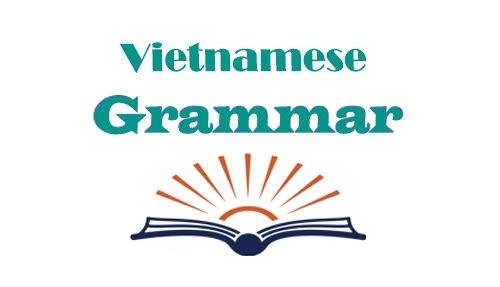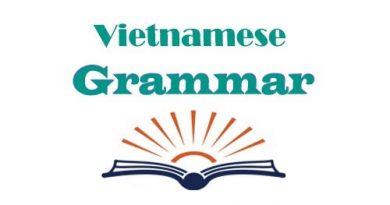How to use “thì” in Vietnamese
The word “thì” can be a noun, a conjunction or an adverb, so it’s important to determine clearly that you’re going to use “thì” in what meaning. In this post, Tiengviet24h will introduce to you: How to use “thì” in Vietnamese. Let’s start!

When “thì” is a noun
“thì” is synonymous with “thời” (time).

Example:
When asking someone to go out for a meal: “Khi nào cậu có thì giờ tụi mình đi ăn nhé?” (Let’s go out for a meal when you have free time)
“thì giờ” can be replaced by “thời giờ” or “thời gian”. Most of Vietnamese people use “thời gian”.
Basically, when replacing the two nouns “thì” and “thời” with each other, Vietnamese people still understand the content of the sentence, but in the following cases, it will lose the nuance of the sentence.
“thì” refers to the period at which the body of a person develop and they become capable of having children
In this case, “thì” is often used for girls. It refers to the most beautiful age in which a girl becomes capable of having children.
Example:

There is an over 30 years old lady who hasn’t got married yet. Her mother says: “Quá lứa lỡ thì rồi khó kiếm được tấm chồng tử tế lắm con ạ.” (It’s difficult to find a good husband when you’re on the shelf.)
Comparison
| Quá lứa lỡ thời rồi khó kiếm được tấm chồng tử tế lắm con ạ. | Quá lứa lỡ thì rồi khó kiếm được tấm chồng tử tế lắm con ạ. |
| –> It’s wrong when using “thời” in this sentence. The listener will think “thời” as a missed opportunity. It doesn’t show the regret of the speaker like when using “thì”. | –> “thì” is used correctly and naturally.
|
“thì” refers to the best time to do something
“thì” in this case is often used in literature or when talking about agriculture.
Example:
+ Ơn trời mưa nắng phải thì / Nơi thì bừa cạn, nơi thì cày sâu.
“mưa nắng phải thì” means that it’s raining and sunny at the right time. This phrase is used in literature.
Note: “phải thì” in “phải khi phải thì” has the opposite meaning to “phải thì” in “mưa nắng phải thì”.
Example:

Parents teach their children to save money. The father says: “Phải có tiền tiết kiệm nhỡ phải khi phải thì con ạ.” (You need to save money because you might encounter difficulties in the future.)
In this case, “phải thì” means to encounter difficulties, bad luck.
“thì” means part of a movement, a technical manipulation or a movement cycle
“thì” in this case is used in engineering, physical education, medicine. It is not often used in daily life.
Example:
+ Động cơ bốn thì (Four-stroke engine)
+ Hai thì hít vào và thở ra của động tác thở (To breathe in and breathe out are the two parts of breathing movement)
When “thì” is a conjunction
We can use “thì” to indicate the coordinated relation or primary-secondary relation.
The conjunction “thì” is often used in speaking.
“thì” indicates what the speaker is going to say is the result of the cause, condition or hypothesis that has been mentioned before
Some common pairs of conjunctions in Vietnamese: nếu – thì, hễ – thì, giá – thì, giá mà – thì, giá như – thì,…
Example:

+ When you want to ask for a discount for a hat, you can say: “Bác nói thách như thế thì cháu không mua nữa đâu.” (I won’t buy this hat if you keep overcharging for it)
In this case, “nói thách” (to overcharge) is the cause, and the result is “cháu không mua nữa” (I won’t buy).
Comparison
| Vì bác nói thách như thế nên cháu không mua nữa đâu. | Bác nói thách như thế thì cháu không mua nữa đâu. |
| –> The listener will think that the speaker is explaining why he/she “won’t buy”. This sentence shows a bit of anger. | –> “thì” is used naturally. It’s suitable when asking for a discount. |
+ When you want to advise your friend to study Vietnamese hard: “Lisa mà không chăm chỉ thì cô ấy đã không giỏi tiếng Việt như thế.” (If Lisa didn’t study hard, she wouldn’t be good at Vietnamese)
“thì” indicates the serial relation
Example:
+ When telling your colleagues that you had to go to the isolation ward after your entry into the country because of COVID, you can say: “Mình vừa xuống sân bay thì người ta yêu cầu phải đi cách ly.” (They asked me to go to the isolation ward as soon as I got off the plane)
In this case, vừa – thì indicates two consecutive actions. There is no time-out between those two actions.
The word “rồi” also indicates the serial relation, but there might be a time-out between two actions.

Comparison
| Mình vừa xuống sân bay thì người ta yêu cầu phải đi cách ly. | Mình xuống sân bay rồi người ta yêu cầu phải đi cách ly. |
| –> The speaker have to go to the isolation ward immediately. | –> The speaker might go home before going to the isolation ward. |
“thì” indicates that the thing that has been mentioned before is the subject of the clause behind
In grammar, “thì” is used to mark the sentence introducer.
Example:
+ When introducing Viet Nam to your friends: “Đẹp thì Việt Nam đẹp lắm, con người lại dễ mến.” (Viet Nam is very beautiful, people are likeable)
+ When introducing your hometown to your Vietnamese friends: “Nhưng yêu thì mình vẫn yêu nhất quê hương mình, vì đó là nơi mình sinh ra và lớn lên.” (I still love my hometown the most because it’s the place where I was born and grew up)
“nếu – thì” indicates the correlative relation
In this case, nếu – thì doesn’t indicate the condition – result relation.
Example:
+ When you want to comment about your colleague: “Nếu ông ấy có hơi thẳng thắn quá thì ông ấy lại rất tốt bụng, nên mọi người vẫn quý.” (He is a little blunt, but he is also very kind, so everyone still loves him)
In this case, nếu – thì is synonymous with tuy – nhưng. It’s suitable for speaking.
Note:
The word “thì” can be placed at the beginning of a sentence (especially in speaking) to emphasize or link with what the previous speaker said.
Example:
+ Lisa: “Ở Việt Nam bây giờ ra đường phải đeo khẩu trang và thường xuyên rửa tay bằng xà phòng.” (Now, you have to wear a mask when going out and wash your hand with soap regularly in Viet Nam)
Chen: “Tại sao vậy?” (Why?)
Lisa: “Thì phải chống dịch Covid mà.” (Because of Covid)
In this case, you don’t need to use “thì”. However, Vietnamese people often use “thì” at the beginning of the sentence.

+ Two friends are talking about their travel plans after social distancing.
Lisa: “Dịch bệnh vẫn chưa hết, người ta khuyến cáo là nên hạn chế du lịch.” (The epidemic is not over yet, it is recommended that everyone should limit travelling)
Chen: “Thì biết thế. Nhưng mình muốn đi chơi lắm rồi.” (I know, but I want to go out)
Lisa: “Thôi, ở nhà chống dịch cậu ạ.” (We had better stay at home)
Comparison
| Thì biết thế. Nhưng mình muốn đi chơi lắm rồi. | Biết thế. Nhưng mình muốn đi chơi lắm rồi. |
| –>The speaker emphasize that he/she is well aware of limiting travelling, but he/she still wants to go out (especially when he/she raises his/her tone at the word “thì”). | –> The speaker knows that everyone should limit travelling, but he/she doesn’t emphasize that he/she is well aware of it. |
When “thì” is an adverb
In this case, “thì” often goes with adjectives to emphasize and show the sarcasm. It’s often used in speaking.
Example:
James praised his female colleague, so his girlfriend gets jealous: “Vâng, cô ấy thì đẹp, thì giỏi hơn em.” (Yeah, she is more beautiful and better than me)
In this case, it’s not natural when using other adverbs such as rất, quá, cực kì…
Above is: How to use “thì” in Vietnamese. See other similar posts in category : Vietnamese grammar
We on social : Facebook
